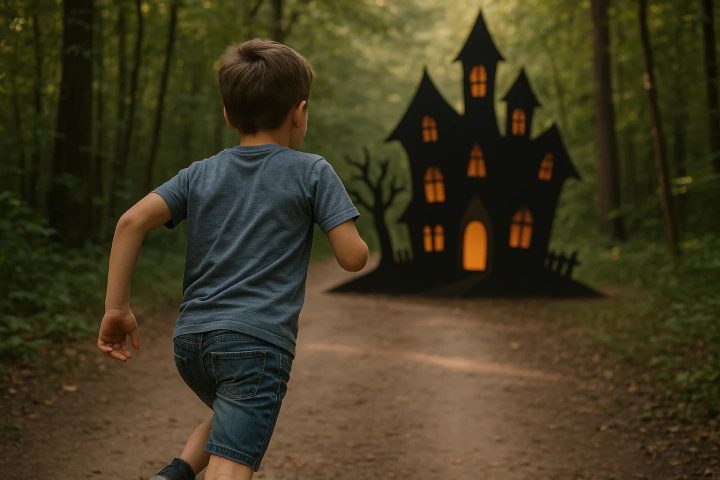One of the easiest and most effective methods of involving people worldwide in a new trend is through a game mode. Children are fond of new games and web trends. However, not all so-called challenges can frighten you and your family. In 2018 and 2019, the Momo challenge emerged, and it raised major concerns. People said it encouraged the children to make life-threatening dares and even self-harm. However, experts indicate that the game was just a hoax, and it spread at a faster rate than actual games. It is not a secret message network that produces the creepy image of the so-called Momo but rather a Japanese sculpture that was posted online as early as 2016. Find out all the information that is required regarding this game, which has appeared as an online game.
What is the Momo Challenge?
The origin of the Momo Challenge goes back to mid-2018 when individuals tended to exchange terrifying screenshots on WhatsApp and YouTube. According to their users, a grotesque appearance named Momo appeared, characterized by strange bulging eyes and a wide, creepy grin, which would often appear in their contact posts. The posts indicated that Momo would taunt children to undertake dangerous activities, culminating in self-harm in case of refusal. As a matter of fact, not a single child has shown that they received a real Momo message and fulfilled one of the challenges.
The disturbing picture of Momo was, however, a 2016 sculpture by a Japanese special-effects artist, which appeared on a Facebook page titled Link Factory. Fake tales were subsequently added to creepypasta websites, and social-media users started to forward purported Momo messages to scare friends. In many case,s the posts that were re-sent contained random phone numbers or links to dead ends or benign joke sites. The fact-checking accounts, such as Snopes and the Associated Press, did not find any traces of an organized network behind the alleged dares by Momo.
Many people had recalled a very similar viral rumor called the Blue Whale Challenge, which took place in 2017. In that tale, young adults were made to do 50 days of risky activities and end with suicide. Most Blue Whale horror stories were false alarms and linked to copy-and-paste horror stories instead of actual cases. Both scenarios did exactly as much harm to kids by teaching them to panic at the sight of headlines as social-media algorithms filled with a craving for clicks did to teach them about their safety.
Is the Momo Challenge real?
You might think there are chances that Momo never contacted kids, as no evidence of actual messages encouraging self-harm in children was found by law enforcement around the world. The challenge did not have any central party involved or a central site. Rather, it was left to random pranksters/bullies to frighten others with the image. Strict check-ups by digital safety associations detected no confirmed cases associated with Momo dares. Health agencies, schools, and even the cybercrime units said they had not heard of a single case of children being manipulated by the Momo challenge, demonstrating the absence of tangible evidence that similar organized threats were actually present.
Digital culture analysts refer to Momo as a digital ghost story. They liken it to campfire stories being shared by legends rather than truths. According to folklorists, it is the same as the long-term moral panic through which society shuns novel technology and social media. The Snopes and Safer Internet Centre media fact-checking websites in the UK and Full Fact declared it to be a hoax, with all noting that relying on unauthenticated claims to perpetuate fear. Psychologists further state that the nature of scary myths can negatively affect the mental health of people because people tend to resort to fear in expectation of something that has never occurred.
There was also the role of social networks. The algorithms encouraged dramatic Momo posts since they encouraged clicks and shares. This kind of feedback mechanism increased the position of sensational stories in news feeds. YouTube was accused of letting videos that had so-called evidence of the existence of Momo get through, even when they did not show anything viable.
Stay informed and safeguard your child from online dangers with FlashGet Kids.
Is it dangerous for kids?
While Momo itself may be a hoax, the panic around it can harm your child in real ways. Here are some risks to watch for:
Anxiety and fear
Seeing scary images and dramatic news can make kids anxious. They may fear that a stranger will contact them online. This fear can affect sleep and mood. The anxiety can also lead to reluctance in using devices altogether, even for school or entertainment.
Copycat pranks
Bullies might send Momo images or messages as a prank. That can upset children and make them feel threatened. It may also damage their trust in peers, especially if the prank came from someone they considered a friend.
Exposure to disturbing and violent content
In attempts to prove Momo’s existence, some videos spliced the creepy Momo image or equally unsettling violent clips into children’s programming on YouTube and YouTube Kids, traumatizing especially young viewers.
False sense of security
Believing Momo is the only online threat may cause you to miss other real dangers like cyberbullying or unsafe contacts. It can also create a narrow understanding of online safety, making broader digital literacy harder to build.
Why do kids chase scary challenges?



The thrill and reward behind fear
Children run after frightening things because they want thrill, belonging, and disclosure. The reward system of the brain feels the need for new and intense experiences during the adolescence period. There is only a moment of thrill in a scary game such as the Momo Challenge. Adolescents have an overload of dopamine once they encounter a fearful experience and overcome it. That sense may be addictive.
Peer pressure and the illusion of trends
There is also a large role of peer pressure. When friends discuss an issue, children feel included. They do not want to miss any joke or story. Social proof makes it feel real even in a situation where there is no actual game in existence. The fact that classmates post on Snapchat or Instagram about Momo looks like a true trend. Children follow those links to find out what all the fuss is about. Every post and share makes the story move further up their news feeds.
Algorithms, identity, and reinforcement loops
The algorithm on YouTube, TikTok, and Instagram monitors the videos you watch. When a child sees one frightening video, a platform usually recommends others. This trend is reinforced as this loop creates the sense of something huge and significant. With time, one or a few videos can become a stream of the same material. The greater instances of it that the kids read, the greater they think that it is real.
Teenagers also experiment with boundaries in their search for identity. It might appear like an honor to be given a challenge that only the brave can perform. By, virtually, crossing the line, they demonstrate that they are mature and adventurous. This need to define oneself is appealed to by scary trends.
How to protect your kids from online scares like the Momo Challenge
Building open conversations with your kids
Talking openly about technology helps build trust and bring your family closer. Start by having a relaxed conversation with your child—ask about the apps they enjoy or the most challenging level they’ve recently played. Listen with genuine interest, without judging. Once they see you’re curious about what they like, they’ll feel more comfortable opening up.
From there, gently introduce topics like internet myths, such as the Momo challenge. You can say something like, “I read that Momo actually came from a sculpture, not a secret group chat.” Show a quick screenshot from a reliable source and explain how some websites use scary headlines just to get more clicks. Reassure them by saying, “It’s okay to ask me anything, even if it sounds silly.” If they’re unsure about something, look it up together as it shows you’re a team.
When you make such conversations a frequent thing, like during dinner, car rides or bedtime, you create a protective zone. In this way, your children learn how to identify the true dangers, discuss fears and be certain that you will overcome a fright together. Not only is open talk your safeguard, but the daily result is that your affinity is strengthened thereby.



Using parental control guidelines and tools
By giving parents the ability to watch their children online, parental control apps protect their health by preventing child abuse on the Internet. They filter websites, block scary videos and put safe search parameters. Such tools are very important and a must-have for all the parents in order to stay safe and protect their kids from any inappropriate content.
Third-party parental control tools assist in showing you what your child does on the internet. Consider using a reliable parental control, such as FlashGet Kids, because it can provide you with all the benefits and protection you may seek as apparent to protect your children and also keep an eye on their online activities at the same time.
With FlashGet Kids, you get all these safety features in one place:



Custom keyword and web filter
It automatically blocks any site, video, or search containing “Momo” (and related terms), so frightening content never reaches your child’s browser.
App blocker
One‑tap lockdown for apps where Momo hoaxes circulate, like YouTube, TikTok, and messaging applications, preventing access to new or banned social platforms. You can set temporary lockdown periods whenever a new Momo trend emerges to keep your child’s device hoax‑free.
Screen‑time scheduling
Define “off‑limits” hours (for example, evenings and school time) to stop endless scrolling that could surface scary challenges.
Real‑time activity alerts
Receive instant notifications when your child attempts to access a blocked site or app, so you can address any concerns immediately. Each alert includes a timestamp and app context, so you understand exactly when and where the attempt occurred.
Live screen view
Mirror your child’s device in real time to see exactly what they’re watching or reading, and let you spot and stop Momo‑related content the moment it appears.
Conclusion
The Momo Challenge testifies to how quickly stories that are not necessarily true become viral. It began as a lurid picture, went bang in headlines, and terrified families, although in reality there was no danger at all. Being aware of the truth enables you to keep calm. Your conversation with your child will help them doubt the stories about scary feelings. Additionally, the extra protection is provided through tools like FlashGet Kids. You do block apps, restrictions on usage, and notifications in case something strange appears. In this manner, you need not violate trust in observing real risks. Stay in the loop, keep talking, and have fun on the internet, minus the risk involved.

